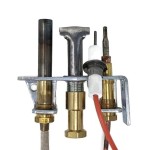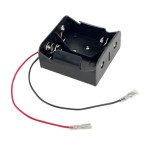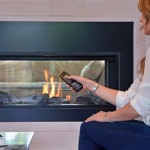```html
Ceramic Tile For Fireplace Surround: A Comprehensive Guide
Fireplace surrounds serve as both functional and aesthetic elements within a living space. They protect combustible materials from the heat generated by the fire and contribute significantly to the overall style and ambiance of the room. Ceramic tile is a popular choice for fireplace surrounds due to its durability, versatility, and inherent fire-resistant properties.
This article explores the various aspects of using ceramic tile for fireplace surrounds, covering the benefits, selection criteria, installation considerations, and maintenance procedures. The information provided aims to equip homeowners and design professionals with the knowledge necessary to make informed decisions regarding ceramic tile for fireplace surround projects.
Understanding Ceramic Tile Composition and Fire Resistance
Ceramic tile is manufactured from a mixture of clay, minerals, and water, which is then molded into the desired shape and fired at high temperatures in a kiln. This firing process vitrifies the material, creating a hard, dense, and water-resistant surface. The inherent composition of ceramic tile contributes to its fire-resistant qualities, making it a suitable material for use around fireplaces.
It is important to distinguish between ceramic tile and porcelain tile. While both are types of ceramic materials, porcelain tile is fired at higher temperatures and has a lower water absorption rate, making it denser and more durable. For fireplace surrounds, either ceramic or porcelain tile can be used, depending on the specific design requirements and budget.
While ceramic tile is fire-resistant, it is not entirely fireproof. Direct, prolonged exposure to extreme heat can cause cracking or damage. Therefore, it is crucial to ensure proper clearance between the fireplace opening and the tile surround, adhering to local building codes and manufacturer recommendations. Consider using a non-combustible material, such as cement board, as a substrate behind the tile for added protection.
The American Society for Testing and Materials (ASTM) provides standards for testing the fire resistance of various materials. While specific fire-resistance ratings are not typically assigned to individual ceramic tiles, the material's inherent properties make it a safe and reliable choice for fireplace surrounds when installed correctly.
Selecting the Right Ceramic Tile for Your Fireplace Surround
Choosing the appropriate ceramic tile for a fireplace surround involves considering several factors, including aesthetics, size, shape, texture, and maintenance requirements. The selection process should align with the overall design scheme of the room and the desired functionality of the fireplace.
Aesthetic considerations are paramount. Ceramic tiles are available in a vast array of colors, patterns, and finishes. From classic subway tiles to intricate mosaic designs, the options are virtually limitless. The chosen tile should complement the fireplace insert or firebox and enhance the room's architectural style. Consider the existing color palette and the desired mood or atmosphere when selecting the tile color and finish. Matte finishes tend to be more understated and subtle, while glossy finishes can add a touch of elegance and reflect light.
The size and shape of the tile also play a crucial role in the overall design. Larger tiles can create a more modern and seamless look, while smaller tiles can add texture and visual interest. Rectangular tiles can be arranged in various patterns, such as brick bond, stacked bond, or herringbone, to create unique designs. Consider the dimensions of the fireplace surround and choose a tile size that is proportionate and aesthetically pleasing.
Texture is another important factor to consider. Ceramic tiles can have smooth, textured, or three-dimensional surfaces. Textured tiles can add depth and dimension to the fireplace surround, creating a more tactile and visually appealing design. However, textured tiles may require more frequent cleaning to remove dust and soot. Smooth tiles are easier to clean and maintain, making them a practical choice for high-use fireplaces.
Finally, consider the maintenance requirements of the chosen tile. Some ceramic tiles are more porous than others and may require sealing to prevent staining. Darker colored tiles may show dust and soot more readily than lighter colored tiles, requiring more frequent cleaning. Choose a tile that is easy to clean and maintain, and that will retain its appearance over time.
Proper Installation Techniques for Ceramic Tile Fireplace Surrounds
Proper installation is crucial for ensuring the longevity and performance of a ceramic tile fireplace surround. Incorrect installation can lead to cracking, loosening, or other problems that can compromise the safety and aesthetics of the fireplace. It is recommended to hire a qualified tile installer with experience in fireplace surround installations.
The first step in the installation process is to prepare the substrate. The substrate should be clean, level, and structurally sound. If the existing substrate is damaged or uneven, it may need to be repaired or replaced. Cement board is a commonly used substrate for fireplace surrounds, as it is fire-resistant and provides a stable surface for tile installation. Ensure the cement board is properly attached to the framing with screws.
Next, apply a thin-set mortar to the substrate using a notched trowel. The thin-set mortar should be specifically designed for use with ceramic tile and should be applied according to the manufacturer's instructions. Use the notched trowel to create ridges in the mortar, which will help the tile adhere to the substrate. Apply the mortar in small sections to prevent it from drying out before the tile is installed.
Carefully place the ceramic tiles onto the mortar, pressing them firmly into place. Use tile spacers to ensure consistent spacing between the tiles. Check the level and alignment of the tiles regularly to ensure a uniform and professional appearance. Allow the mortar to dry completely according to the manufacturer's instructions before proceeding to the next step.
Once the mortar is dry, remove the tile spacers and apply grout to the joints between the tiles. Choose a grout color that complements the tile and the overall design scheme. Use a grout float to press the grout into the joints, ensuring that they are completely filled. Wipe away any excess grout with a damp sponge. Allow the grout to dry according to the manufacturer's instructions.
Finally, seal the grout with a grout sealer to protect it from staining and moisture damage. Apply the sealer according to the manufacturer's instructions. Allow the sealer to dry completely before using the fireplace. Periodically inspect the tile and grout for any signs of damage or wear, and make repairs as needed.
Consider the use of heat-resistant grout if the fireplace generates extreme heat. These grouts are formulated to withstand higher temperatures without cracking or deteriorating.
Maintaining Your Ceramic Tile Fireplace Surround
Proper maintenance is essential for preserving the appearance and longevity of a ceramic tile fireplace surround. Regular cleaning and occasional repairs can help prevent staining, cracking, and other problems.
Clean the tile surround regularly with a mild detergent and water. Avoid using abrasive cleaners or scouring pads, as these can scratch the surface of the tile. For stubborn stains, try using a specialized tile cleaner or a solution of baking soda and water. Rinse the tile thoroughly with clean water and dry with a soft cloth.
Inspect the grout regularly for any signs of cracking or crumbling. If necessary, repair the grout by removing the damaged grout and applying new grout. Use a grout saw or a utility knife to remove the old grout. Apply new grout according to the manufacturer's instructions and allow it to dry completely before sealing.
Check for any loose or cracked tiles. If necessary, replace the damaged tiles by removing the old tiles and installing new tiles using thin-set mortar. Ensure the new tiles are level and aligned with the existing tiles. Allow the mortar to dry completely before grouting.
Consider applying a penetrating sealer to the tile surface, especially if the tile is porous. This will help protect the tile from staining and moisture damage. Apply the sealer according to the manufacturer's instructions. Reapply the sealer periodically as needed.
In the event of a chimney fire, have the fireplace and surrounding area inspected by a qualified professional before using it again. High temperatures associated with chimney fires can cause damage to the tile and surrounding materials, even if the damage is not immediately apparent.
```
Fireplace Tiles Classique Floors Tile Portland Or

Planning A Tile Fireplace Budgeting Design Diy Vs Pro

14 Fresh Designs For Tiled Fireplaces Bob Vila

How To Tile A Fireplace My Uncommon Slice Of Suburbia

Hottest Fireplace Trend Tile Flooring America
Fireplace Tile Surround 5 Decorative Mantel Tiles 2024

5 Tips For Designing Fireplaces With Cement Or Ceramic Tile Belk

Fireplace Tiles Classique Floors Tile Portland Or
Fireplace Tile Surround 5 Decorative Mantel Tiles 2024

Fireplace Tiles Ideas And Patterns Rubi Blog Usa
Related Posts








